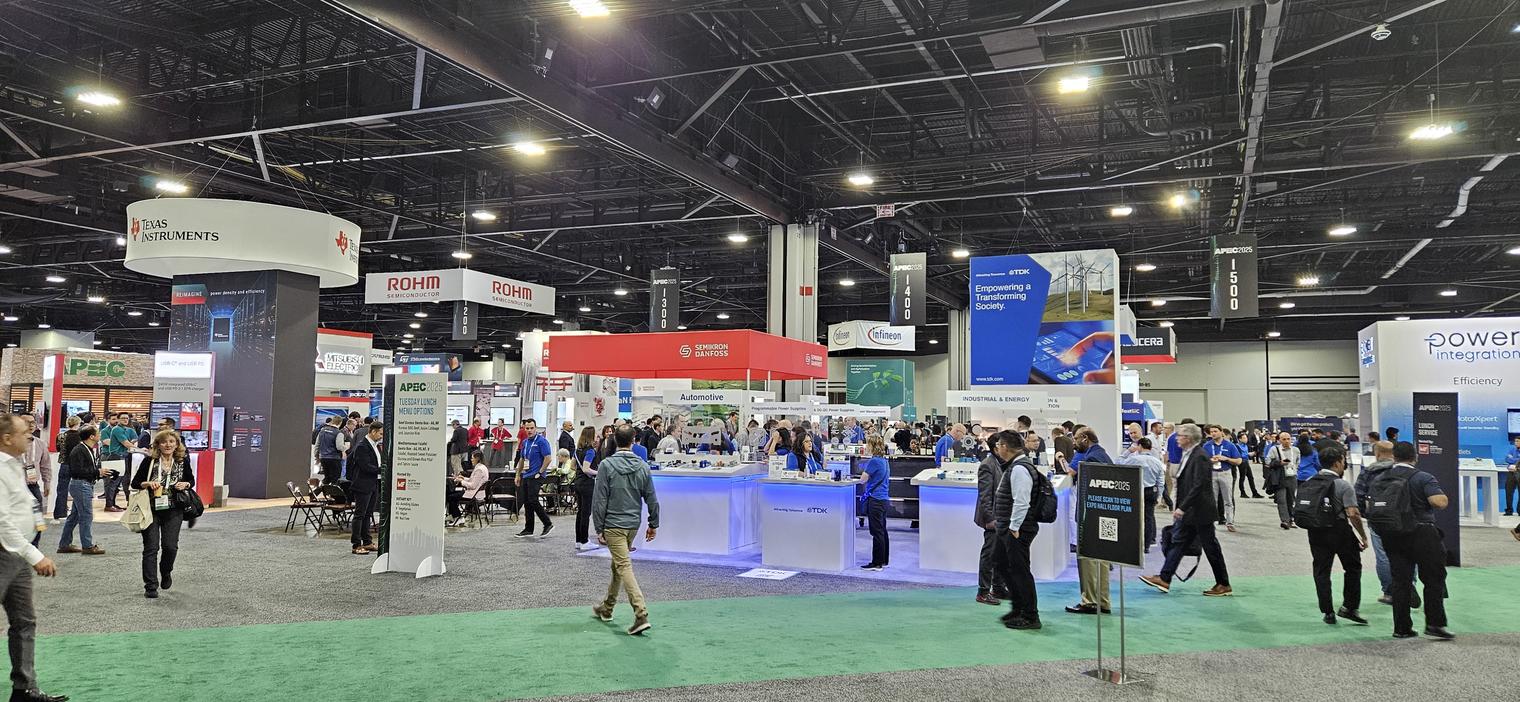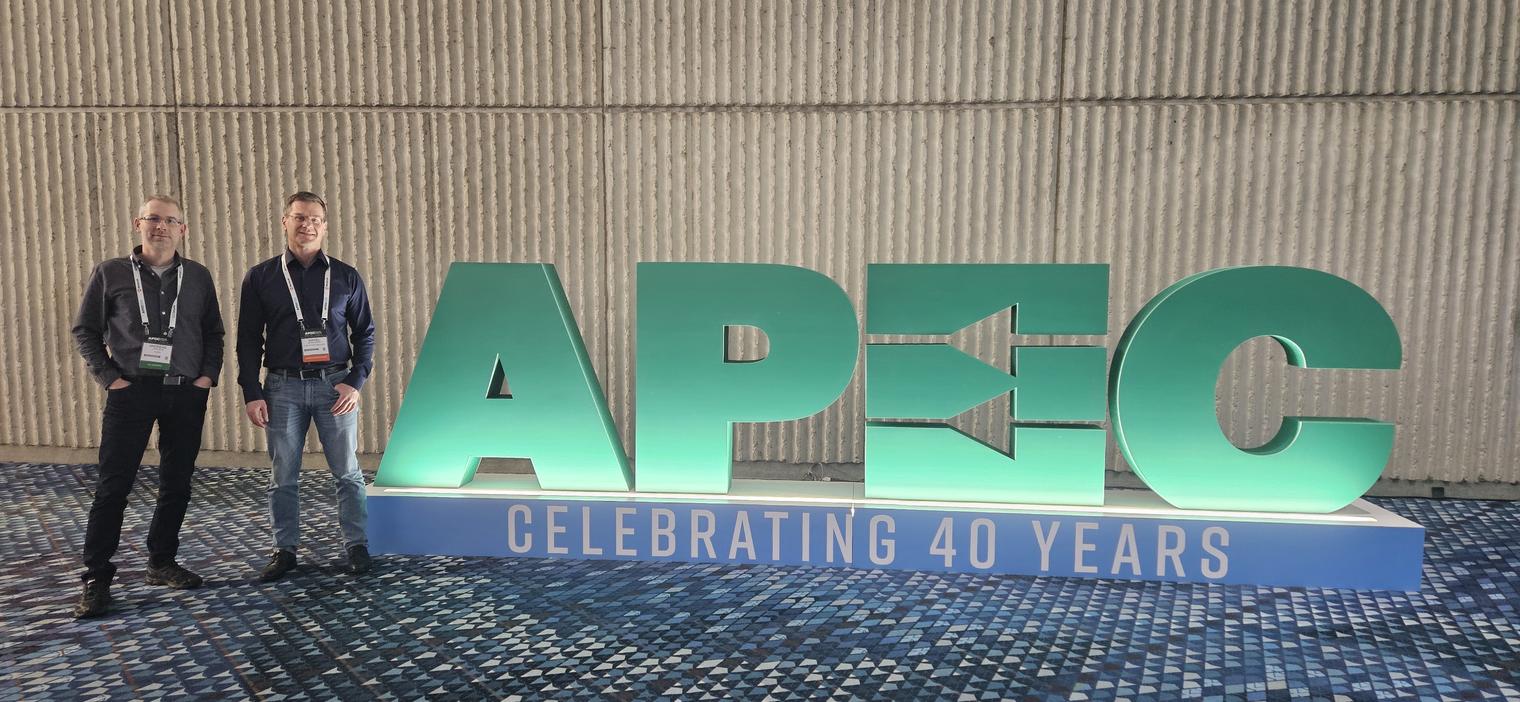APEC 2025: What caught our attention

When you step off a plane at Atlanta airport in mid-March and swap a chilly morning in Stockholm, Sweden, for the warm spring sunshine of Georgia in the US, your senses rapidly adjust. Buoyed by the temperature boost, we headed across to the World Congress Center to attend this year’s Applied Power Electronics Conference, better known by its acronym APEC.

Engineering power for AI
The main theme echoed throughout the event was how to better cope with requirements in energy efficiency and power density across AI data centers and electric vehicles. That demand is fueling a collective push towards high-voltage direct current (HVDC) distribution. The move to HVDC isn’t just a technical upgrade; it is a structural transformation redefining how power systems are managed from grid to chip.
At the conference, the AI / high-current trend played out in countless presentations, with researchers and suppliers exploring how to optimize performance by reducing the number of conversion stages and moving toward direct conversion architectures with higher voltage tolerance.
We’re seeing a sharp uptick in integration too – not just on the board, but within the very materials and devices we use. PCB-embedded magnetics, chip-scale capacitors, and highly complex coupled inductor designs gained a share of the limelight. It’s all about vertical density: how much power you can handle, in how little space, with how much efficiency.
That dovetails into another key trend: intelligent design. From simulations to digital twins, the age of trial-and-error prototyping is fading fast. AI-supported design tools are enabling faster, more reliable product development cycles, giving engineers the power to model, iterate, and optimize before a single physical prototype is built.
SiC and GaN also continue to dominate the spotlight in semiconductor development. These materials allow engineers to rethink conventional architectures, and the benefits of efficiency, reliability and system-wide simplification are being felt across multiple applications, from hyperscale computing to electric mobility.
Last, but by no means least, power industry professionals looked at TLVR (Trans-Inductor Voltage Regulation) and coupled inductors for voltage regulator modules (VRMs). For IBC (Intermediate Bus Converters) different HSC (Hybrid Switched Capacitors) topologies are emerging as the main candidate. These technologies are gaining traction as designers look for smarter, more compact ways to manage transient response and improve overall efficiency in high-performance systems. As current demands increase and board space becomes more constrained, these advanced architectures offer promising pathways to meet both density and responsiveness requirements.

Conclusion
What was particularly pleasing to see was the diverse audience in attendance at APEC –from power electronics industry experts and university professors to more junior electronics engineers and student technicians of the future.
APEC celebrated its 40th anniversary and continues to be an interesting forum to share ideas about power conversion and energy management techniques. With over 6,000 attendees and more than 300 exhibitors in 2025, the event proves it maintains relevance for theoretical debate and demonstrations of power solutions.
The conference program itself, with over 700 presentations, delivered depth and breadth across many facets of power electronics, from bleeding-edge research to practical applications.
Events like APEC remind us why we do what we do at Flex Power Modules – helping us to stay ahead and remain connected whilst changes in the market continue to speed up and strategically shift.
